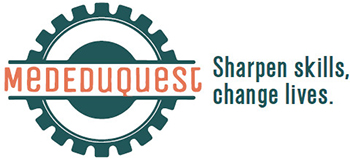Best Practices for Injectable Medications
Parenteral medications offer several clinical advantages, the most important being the rapid onset of therapeutic effects, meaning the drug works much faster. However, healthcare providers must follow certain protocols, guidelines, and best practices for injectable medications to ensure an aseptic technique. This is essential for preventing infections and the safety of patients and healthcare workers.
Please continue reading to learn safe medication practices and isolation precautions from the Centers for Disease Control and the National Center for Biotechnology Information.
What are the best practices for injections?
HAND HYGIENE
This is a broad term that refers to the process of handwashing and the use of antiseptics to prevent the spread of infectious agents. Healthcare personnel should perform hand hygiene before and after handling and administering an injectable drug product, before and after coming in direct contact with patients, and before and after putting on and removing gloves. Additionally, hand hygiene is necessary after coming into contact with blood or body fluids.
USE OF GLOVES AND OTHER PERSONAL PROTECTIVE EQUIPMENT
Eye protection, masks, and personal protective equipment (PPE) are not needed for routine injections. If both the patient’s and health care worker’s skin is intact, gloves do not need to be worn for a routine intradermal, subcutaneous, or intramuscular injection.
However, healthcare personnel should wear non-sterile, well-fitting, single-use gloves when giving intravenous injections or performing a venipuncture to administer the intravenous solution. Gloves should also be used when there is a risk of coming in contact with blood or other body fluids or when the patient’s or healthcare worker’s skin is not intact.
SKIN DISINFECTION AND STERILE PREPARATIONS
Safe injection practices include disinfecting the injection site with 60-70% isopropyl alcohol or ethanol (methyl alcohol or methanol is unsafe for humans). The patient’s skin should be disinfected with a single-use swab or cotton ball. The area should be cleaned from the center, moving outward. Healthcare providers should wait 30 seconds to allow the disinfectant solution to dry completely before administration of the injection.
USE OF SYRINGES AND OTHER INJECTION DEVICES
A new, sterile syringe should be used for each patient. To prevent the transmission of infectious diseases, healthcare providers should not use a single loaded syringe on more than one patient, even with a new needle.
USE OF MEDICATION VIALS
A single-dose medication vial should be used whenever possible to ensure medication safety and reduce cross-contamination. Leftover medicine in medication vials should not be combined for later use.
After removing a dose from a multidose vial, the injection should be administered without delay.
To prevent contamination, it’s important that multidose vials are not stored in the open ward. If possible, one multidose vial should be used for each patient. Writing the patient’s name on the medication vial can help ensure it is used for the same patient.
To ensure injection safety, multidose vials of parenteral medications should be discarded if their sterility is compromised, they were not stored correctly, 24 hours have passed since they were opened, or the expiration date has passed.
MEDICATION PREPARATION
The immediate patient treatment area should be free of clutter to allow for thorough cleaning and ensure medication safety. To aid infection control, all injection preparation surfaces should be cleaned with 60-70% isopropyl alcohol or ethanol before the injection session. All the required equipment and necessary supplies (needles, syringes, reconstitution solution, alcohol swabs, and sharps container) should be assembled before the session.
SAFE INJECTION PRACTICES
Healthcare professionals should check the prescription and confirm the patient’s name and dosage before administering an injection. After performing hand hygiene and disinfecting the injection site, a new packet of needles and syringes should be opened in front of the patient for reassurance.
PREVENTING SHARPS INJURIES
The patient should be adequately prepared. Needles should not be manipulated by breaking or bending them. Recapping should be avoided, but if necessary, the single-hand scoop technique should be used. Needles should be discarded in a leak-free and puncture-resistant sharps container kept within arm’s reach. Sharps containers should be sealed and discarded when three-fourths full.
Additional Safety Tips:
Here are some more safe injection practice recommendations for healthcare settings:
Do not give injections on injection sites compromised by infection, dermatitis, cuts, new tattoo, open sores, or any other type of open skin or skin lesions. MedEduQuest has designed different types of injection simulators to improve injection skills in practical application.

